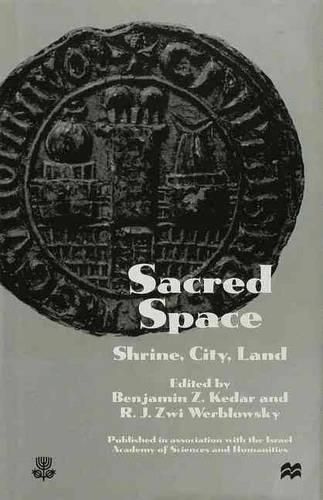Readings Newsletter
Become a Readings Member to make your shopping experience even easier.
Sign in or sign up for free!
You’re not far away from qualifying for FREE standard shipping within Australia
You’ve qualified for FREE standard shipping within Australia
The cart is loading…






The way we understand particular spaces is mediated by our perceptions of the difference between the sacred and the profane. Throughout history, different peoples have revered vastly diverse spaces as sacred for vastly diverse reasons. In Sacred Spaces, Benjamin Z. Kedar and R. J. Zwi Werblowsky have compiled a wide-ranging collection of essays exploring a broad array of ancient and contemporary holy places. The book reviews sacred spaces of the ancient religions–Judaism, Christianity, Islam, and Indian and East-Asian Religions–and discusses how these spaces have been conceptualized and experienced. Chapter topics include an investigation of the role of charismatic dreams in the creation of sacred sites in present-day Israel; an analysis of cities as cultic centers in Germany and Italy during the Middle Ages; a history of the sacred Mount Hiko in Japan; and a study of the Muslim holy cities as foci of Islamic revivalism in the eighteeth century. Sacred Spaces provides readers with original and illuminating examples of the myriad ways in which we perceive and construct sacred space.
$9.00 standard shipping within Australia
FREE standard shipping within Australia for orders over $100.00
Express & International shipping calculated at checkout
The way we understand particular spaces is mediated by our perceptions of the difference between the sacred and the profane. Throughout history, different peoples have revered vastly diverse spaces as sacred for vastly diverse reasons. In Sacred Spaces, Benjamin Z. Kedar and R. J. Zwi Werblowsky have compiled a wide-ranging collection of essays exploring a broad array of ancient and contemporary holy places. The book reviews sacred spaces of the ancient religions–Judaism, Christianity, Islam, and Indian and East-Asian Religions–and discusses how these spaces have been conceptualized and experienced. Chapter topics include an investigation of the role of charismatic dreams in the creation of sacred sites in present-day Israel; an analysis of cities as cultic centers in Germany and Italy during the Middle Ages; a history of the sacred Mount Hiko in Japan; and a study of the Muslim holy cities as foci of Islamic revivalism in the eighteeth century. Sacred Spaces provides readers with original and illuminating examples of the myriad ways in which we perceive and construct sacred space.